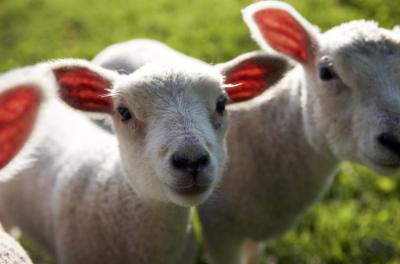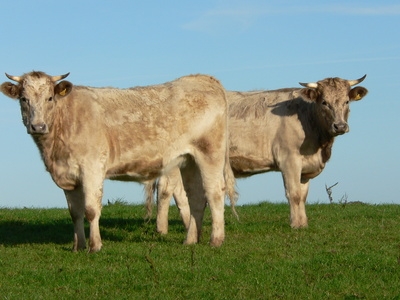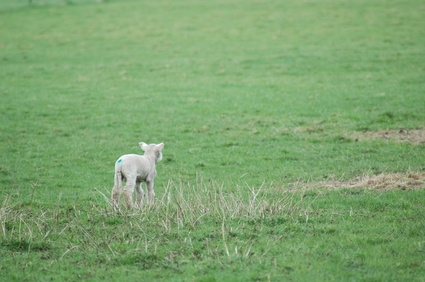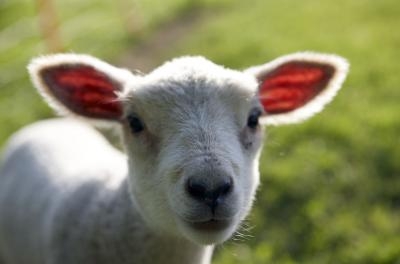
Homemade Milk Replacer for a Lamb. Whether you’re a backyard sheep farmer or a country kid in a 4H club, you need to be prepared to have duplicate or orphaned lambs in the spring during lambing season. Sheep commonly birth multiples of twins and triplets and some ewes either don’t produce enough colostrum and milk, or die during parturition (birth). When you can’t place an orphan with another ewe to nurse, having frozen colostrum and lamb milk replacer on hand provides the nutrients the baby needs until he can be weaned.

A newborn lamb needs the mother’s colostrum for the energy and antibodies it carries into his system. To prepare for large lambing seasons, farmers are urged to freeze excess amounts of good quality colostrum from their herd to be used the next time they have an orphan to feed, according to researchers at the Oregon State University Extension Service in their article, “Artificial Rearing of Lambs on Milk Replacer Diets.” They say that “home brew” colostrum supplements are not effective and may possibly cause digestive upset in the newborn; synthetic substitutes need more scientific evaluation to determine their efficacy. Thaw frozen colostrum at room temperature or in a hot water bath to avoid destroying nutrients and antibodies. Oregon State recommends feeding a newborn 3 oz. of colostrum per 1 lb. of the lamb’s body weight over 18 hours. For example, a “10-lb. lamb would receive 30 oz. of colostrums divided into four equal doses (at birth, 6 hours, 12 hours and 18 hours).”
Once the newborn has been fed colostrum, begin feeding the lamb a milk replacer. Susan Schoenian, a Sheep & Goat Specialist at the University of Maryland’s Western Maryland Research & Education Center, says that because of its high fat content, lamb milk replacer should be mixed according to package directions in warm water and then allowed to cool in a refrigerator. In her article, “Raising Lambs and Kids Artificially,” she states that by feeding the orphans with cold milk, “there is less tendency for the lambs/kids to overeat, thus helping to prevent bloat, digestive upsets, and scours.” Scours is newborn diarrhea that can be fatal. Lambs require feeding frequently during their first few days; after the third day, they need to be fed 8 oz. of milk replacer every three hours. Schoenian suggests that at 10 days old, lambs be fed 12 oz. three times a day, and at 3 weeks of age, “two feedings of 16 ounces is appropriate.”
Because the farmer’s goal is to get the lambs eating on their own as soon as possible, offer the lamb small amounts of dry feed at 10 days old. The babies require free-choice “creep” feed, a soft, starter feed with at least 20 percent protein. According to the Oregon State researchers, farmers can begin weaning the lambs at 4 weeks of age after they have consumed 40 to 50 quarts of milk replacer.
 How to Mix Copper Sulfate
How to Mix Copper Sulfate
How to Mix C
How to Mix Copper Sulfate
How to Mix Copper Sulfate
How to Mix C
 Homemade Milk Replacer for a Lamb
Homemade Milk Replacer for a Lamb
Home
Homemade Milk Replacer for a Lamb
Homemade Milk Replacer for a Lamb
Home
 How to Raise a Baby Lamb
How to Raise a Baby Lamb
How to Raise
How to Raise a Baby Lamb
How to Raise a Baby Lamb
How to Raise
 Why the Tasmanian Devil Is Endangered
Why the Tasmanian Devil Is Endangered
Why the Tasmanian Devil Is Endangered
Why the Tasmanian Devil Is Endangered
 How Much Should I Be Bottle Feeding a Lamb?
How Much Should I Be Bottle Feeding a Lamb?
How Much Should I Be Bottle Feeding a Lamb?
How Much Should I Be Bottle Feeding a Lamb?
Copyright © 2005-2016 Pet Information All Rights Reserved
Contact us: www162date@outlook.com